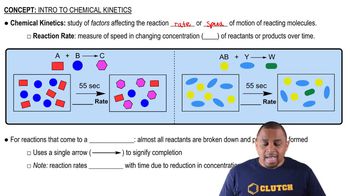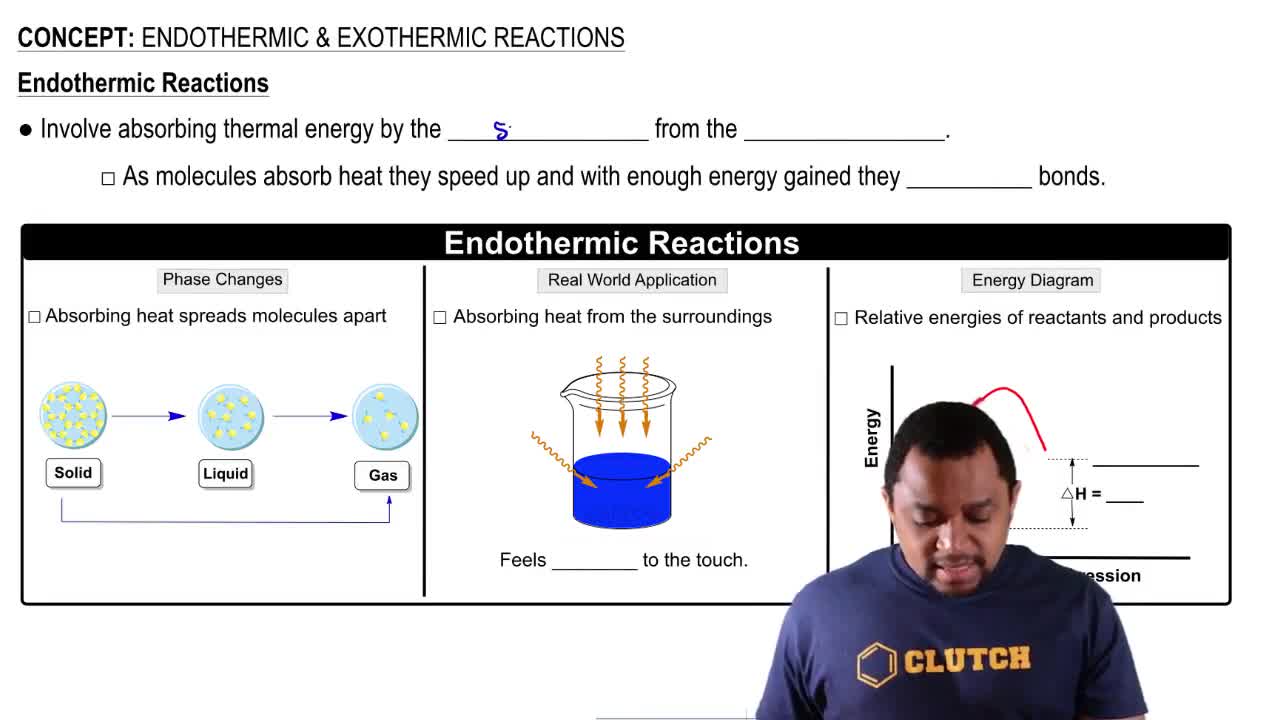Here are the essential concepts you must grasp in order to answer the question correctly.
Reaction Kinetics
Reaction kinetics studies the rates of chemical reactions and the factors that affect these rates. It involves understanding how the concentration of reactants and products changes over time, and how temperature, catalysts, and other conditions influence these rates. In the context of the given question, the forward and reverse rate constants at different temperatures provide insight into the reaction dynamics.
Recommended video:
Equilibrium and Rate Constants
In a chemical reaction at equilibrium, the rate of the forward reaction equals the rate of the reverse reaction. The equilibrium constant (K) can be expressed in terms of the rate constants (kf and kr) for the forward and reverse reactions. By analyzing the temperature dependence of these rate constants, one can infer whether the reaction favors products or reactants, which is crucial for determining if the reaction is endothermic or exothermic.
Recommended video:
Endothermic vs. Exothermic Reactions
Endothermic reactions absorb heat from their surroundings, resulting in a decrease in temperature, while exothermic reactions release heat, increasing the temperature. The temperature dependence of the rate constants can indicate the nature of the reaction; if the forward rate constant increases significantly with temperature, it suggests that the reaction requires heat input, characteristic of an endothermic process.
Recommended video:
Endothermic & Exothermic Reactions
 Verified step by step guidance
Verified step by step guidance


